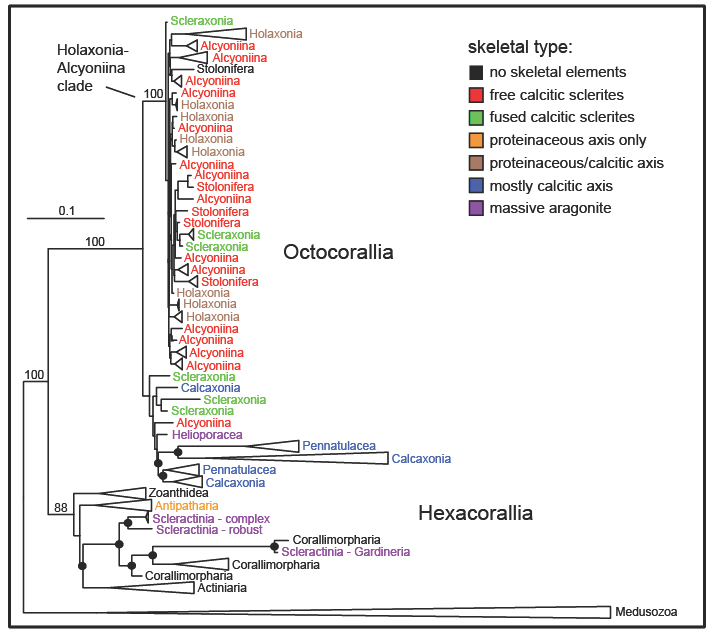Solving Long Standing Problems with New Techniques
Project Goals
|
Although previous molecular phylogenetic studies have found strong support for relationships among some orders of Anthozoa, key regions of the tree remain very poorly resolved (see figure below). We will construct a well-resolved molecular phylogeny using ultraconserved elements (http://ultraconserved.org/) and their flanking regions to understand character evolution within the group. Funded by NSF DEB.
|
Skeletal type mapped on a phylogeny of Anthozoans, inferred from 18S, 16S, and 28S rDNA (Data from Cnidarian TOL project). |
Funding |
This material is based upon work supported by the National Science Foundation under Grant Number NSF DEB 1457817
|
Contact us |
AnthozoanUCEs {at} gmail.com
Photo Credits; C. McFadden and the NOAA Okeanos Explorer Program |

